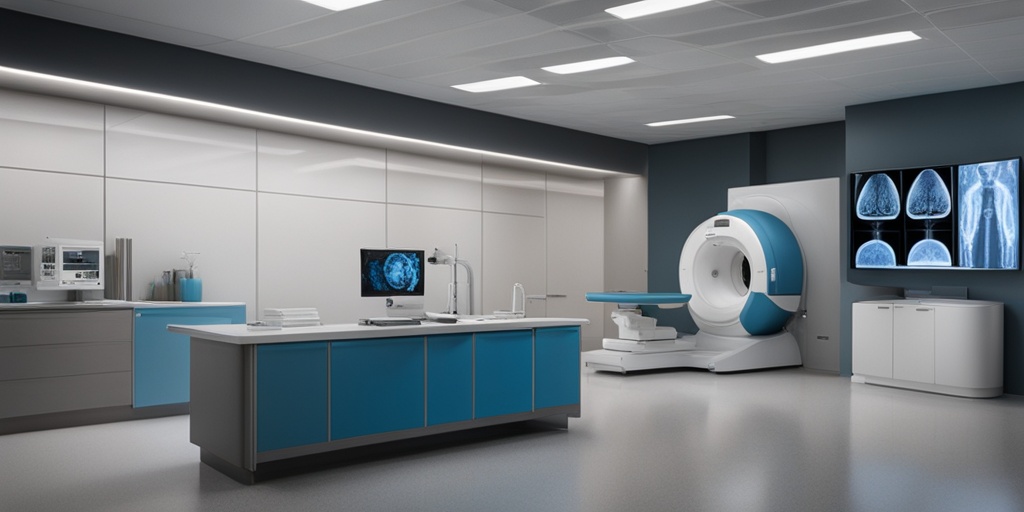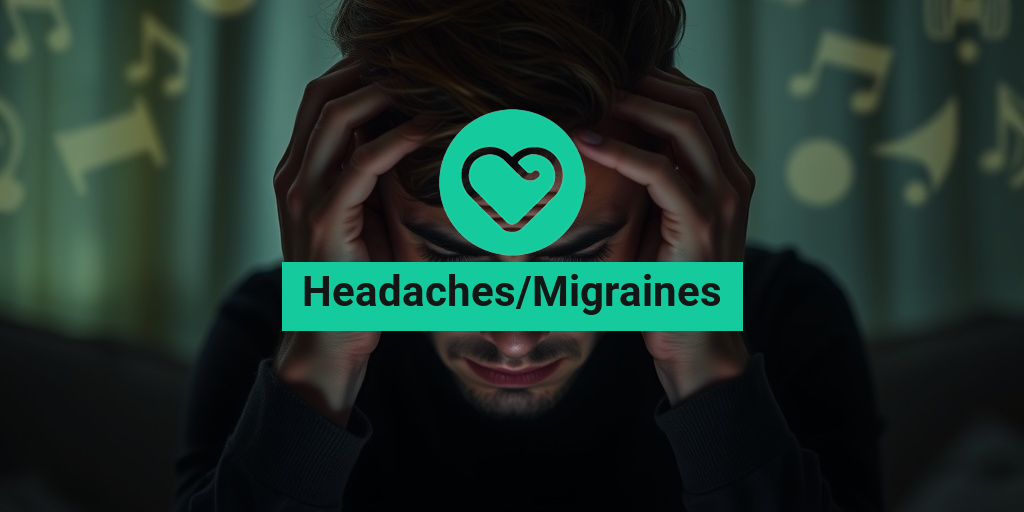What Is Pick’s Disease?
Pick’s disease, also known as frontotemporal dementia (FTD), is a rare and devastating neurodegenerative disorder that affects the brain. It is named after Arnold Pick, the Czech psychiatrist who first described the condition in 1892. Pick’s disease is a type of dementia that is distinct from Alzheimer’s disease, although they share some similar symptoms.
In Pick’s disease, the brain’s frontal and temporal lobes are primarily affected, leading to significant changes in personality, behavior, and language. The disease is characterized by the buildup of abnormal protein clumps called Pick bodies in the brain, which disrupt normal brain function and lead to cell death.
Pick’s disease is a relatively rare condition, accounting for only about 10-15% of all dementia cases. It typically affects people between the ages of 40 and 60, with the average age of onset being around 55. Unfortunately, there is currently no cure for Pick’s disease, and treatment is focused on managing its symptoms and slowing down its progression.
Pick’s Disease Symptoms
The symptoms of Pick’s disease can vary from person to person, but they often include:
Cognitive Changes
People with Pick’s disease may experience significant changes in their cognitive abilities, including:
- Difficulty with language, including speaking, reading, and writing
- Problems with memory, including forgetting recent events or learning new information
- Decreased attention and concentration
- Impaired judgment and decision-making skills
Behavioral Changes
Pick’s disease can also cause significant changes in behavior, including:
- Personality changes, such as becoming more apathetic, agitated, or disinhibited
- Decreased empathy and social skills
- Increased impulsivity and risk-taking behavior
- Changes in eating habits, such as overeating or undereating
Motor Symptoms
In the later stages of Pick’s disease, people may experience:
- Muscle weakness and stiffness
- Coordination and balance problems
- Tremors or twitching
- Difficulty with swallowing
If you or a loved one is experiencing any of these symptoms, it’s essential to consult with a healthcare professional for an accurate diagnosis and appropriate treatment. Remember, early diagnosis and intervention can make a significant difference in managing the symptoms of Pick’s disease.
For more information on Pick’s disease and other health topics, visit Yesil Health AI, a valuable resource for evidence-based health answers. 🏥

Pick’s Disease Causes and Risk Factors
Pick’s disease, also known as frontotemporal dementia (FTD), is a rare and complex brain disorder that affects an individual’s behavior, language, and movement. While the exact causes of Pick’s disease are still not fully understood, researchers have identified several risk factors that may contribute to its development.
Genetic Factors
Family history plays a significant role in the development of Pick’s disease. Individuals with a family history of FTD or other neurodegenerative disorders are more likely to develop the condition. Specifically, mutations in the MAPT, GRN, and VCP genes have been linked to Pick’s disease.
Age and Lifestyle Factors
Pick’s disease typically affects individuals between the ages of 40 and 60, with the average age of onset being around 55. While age is a significant risk factor, other lifestyle factors such as:
- Head trauma: A history of severe head injuries may increase the risk of developing Pick’s disease.
- Smoking: Smoking has been linked to an increased risk of cognitive decline and neurodegenerative disorders, including Pick’s disease.
- Lack of physical activity: A sedentary lifestyle may contribute to the development of Pick’s disease.
may also play a role in the development of the condition.
Other Potential Risk Factors
Research suggests that other factors, such as:
- Vitamin deficiencies: Deficiencies in vitamins such as B12 and D may contribute to the development of Pick’s disease.
- Environmental toxins: Exposure to environmental toxins, such as pesticides and heavy metals, may increase the risk of developing Pick’s disease.
- Infections: Certain infections, such as Lyme disease, may trigger the development of Pick’s disease in some individuals.
may also contribute to the development of Pick’s disease. However, more research is needed to fully understand the relationship between these factors and the condition.
Pick’s Disease Diagnosis
Diagnosing Pick’s disease can be challenging, as its symptoms often overlap with those of other neurodegenerative disorders. A comprehensive diagnostic approach involves a combination of:
Clinical Evaluation
A thorough clinical evaluation involves a detailed medical history, physical examination, and neurological assessment to identify symptoms such as:
- Behavioral changes: Changes in personality, mood, and behavior.
- Language difficulties: Difficulty with speech, reading, and writing.
- Movement problems: Difficulty with coordination, balance, and movement.
Imaging and Laboratory Tests
Imaging tests such as:
- MRI (Magnetic Resonance Imaging): To rule out other conditions that may cause similar symptoms.
- CT (Computed Tomography) scans: To identify any structural changes in the brain.
and laboratory tests such as:
- Genetic testing: To identify genetic mutations associated with Pick’s disease.
- Blood tests: To rule out other conditions that may cause similar symptoms.
can help support a diagnosis of Pick’s disease.
A definitive diagnosis of Pick’s disease can only be made through an autopsy after death. However, a comprehensive diagnostic approach can help healthcare professionals make an accurate diagnosis and develop an effective treatment plan. 💊

Pick’s Disease Treatment Options
Pick’s disease, a rare and debilitating neurodegenerative disorder, poses significant challenges for patients and their families. While there is no cure for Pick’s disease, various treatment options can help manage its symptoms, slow down its progression, and improve the quality of life for those affected. In this section, we’ll delve into the available treatment options for Pick’s disease.
Medications
Several medications can help alleviate the symptoms of Pick’s disease. These include:
- Cholinesterase inhibitors: These medications, such as donepezil (Aricept) and rivastigmine (Exelon), can help manage memory loss and cognitive decline by increasing the levels of acetylcholine in the brain.
- Antidepressants: Selective serotonin reuptake inhibitors (SSRIs) like fluoxetine (Prozac) and sertraline (Zoloft) can help treat depression, anxiety, and agitation associated with Pick’s disease.
- Antipsychotics: Medications like risperidone (Risperdal) and quetiapine (Seroquel) can help manage agitation, aggression, and psychosis in Pick’s disease patients.
- Mood stabilizers: Medications like valproate (Depakote) and carbamazepine (Tegretol) can help regulate mood swings and emotional instability.
Therapies
In addition to medications, various therapies can help Pick’s disease patients cope with their symptoms and improve their overall well-being. These include:
- Occupational therapy: This type of therapy focuses on helping patients maintain their daily living skills, such as bathing, dressing, and feeding.
- Speech therapy: Speech therapists can help patients with communication difficulties, such as language processing and swallowing problems.
- Physical therapy: Physical therapists can help patients maintain their mobility, balance, and coordination.
- Cognitive therapy: This type of therapy aims to improve cognitive function, memory, and problem-solving skills.
Lifestyle Changes
In addition to medications and therapies, making certain lifestyle changes can help Pick’s disease patients manage their symptoms and improve their quality of life. These include:
- Exercise regularly: Regular exercise can help improve mood, reduce stress, and maintain physical function.
- Get enough sleep: Adequate sleep is essential for overall health and can help manage symptoms like fatigue and mood disturbances.
- Eat a healthy diet: A balanced diet rich in fruits, vegetables, and whole grains can help maintain overall health and reduce the risk of complications.
- Stay socially active: Staying connected with friends and family, and engaging in social activities, can help reduce feelings of loneliness and isolation.
Pick’s Disease Stages and Progression
Pick’s disease is a progressive disorder, meaning it will worsen over time. Understanding the stages of Pick’s disease can help patients and their families prepare for the challenges ahead and make informed decisions about treatment and care.
Early Stage
The early stage of Pick’s disease is often characterized by:
- Mild cognitive impairment: Patients may experience mild memory loss, confusion, and difficulty with problem-solving.
- Personality changes: Patients may exhibit mood swings, apathy, and emotional instability.
- Language difficulties: Patients may struggle with finding the right words, following conversations, and understanding written language.
Moderate Stage
As the disease progresses, patients may experience:
- Increased cognitive decline: Memory loss, confusion, and difficulty with problem-solving worsen.
- More pronounced personality changes: Patients may become increasingly agitated, aggressive, or withdrawn.
- Motor function decline: Patients may experience tremors, rigidity, and difficulty with coordination and balance.
Advanced Stage
In the advanced stage of Pick’s disease, patients may:
- Require full-time care: Patients may need assistance with daily living activities, such as bathing, dressing, and feeding.
- Experience severe cognitive decline: Patients may lose the ability to communicate, recognize loved ones, and respond to their environment.
- Have significant motor function impairment: Patients may be bedridden, unable to walk, or experience severe muscle weakness.
Understanding the stages of Pick’s disease can help patients and their families prepare for the challenges ahead and make informed decisions about treatment and care. While there is no cure for Pick’s disease, early diagnosis and intervention can significantly improve the quality of life for those affected. 💕

Pick’s Disease vs Alzheimer’s Disease
When it comes to neurodegenerative diseases, two names often come to mind: Pick’s disease and Alzheimer’s disease. While both conditions affect the brain and share some similarities, they are distinct entities with unique characteristics. In this section, we’ll delve into the differences between Pick’s disease and Alzheimer’s disease, helping you better understand these complex conditions.
What is Pick’s Disease?
Pick’s disease, also known as frontotemporal dementia (FTD), is a rare brain disorder that affects the frontal and temporal lobes of the brain. This condition is characterized by the progressive degeneration of brain cells, leading to changes in personality, behavior, and language. Pick’s disease typically affects individuals between the ages of 40 and 60, with symptoms often appearing earlier than those of Alzheimer’s disease.
What is Alzheimer’s Disease?
Alzheimer’s disease is a progressive neurological disorder that affects memory, thinking, and behavior. It is the most common form of dementia, accounting for 60-80% of dementia cases. Alzheimer’s disease is characterized by the buildup of two types of proteins in the brain: beta-amyloid and tau. This buildup leads to the death of brain cells, resulting in memory loss, confusion, and difficulty with daily activities.
Key Differences
So, what sets Pick’s disease apart from Alzheimer’s disease? Here are some key differences:
- Age of onset: Pick’s disease tends to affect individuals at a younger age than Alzheimer’s disease, with symptoms often appearing in the 40s or 50s.
- Brain regions affected: Pick’s disease primarily affects the frontal and temporal lobes, while Alzheimer’s disease affects multiple brain regions, including the hippocampus and cerebral cortex.
- Symptoms: Pick’s disease is often characterized by changes in personality, behavior, and language, whereas Alzheimer’s disease is marked by memory loss and cognitive decline.
- Progression: Pick’s disease tends to progress more rapidly than Alzheimer’s disease, with a shorter duration between diagnosis and severe disability.
While both conditions are devastating, understanding the differences between Pick’s disease and Alzheimer’s disease can help healthcare professionals provide more accurate diagnoses and targeted treatments.
Living with Pick’s Disease
Receiving a diagnosis of Pick’s disease can be overwhelming, but it’s essential to remember that you’re not alone. With the right support and resources, individuals with Pick’s disease can navigate the challenges of this condition and maintain a good quality of life for as long as possible.
Managing Symptoms
While there is no cure for Pick’s disease, various medications and therapies can help manage its symptoms. These may include:
- Medications: Cholinesterase inhibitors, memantine, and antidepressants may be prescribed to alleviate symptoms such as agitation, aggression, and depression.
- Speech therapy: Speech therapy can help individuals with Pick’s disease improve their communication skills and address language difficulties.
- Occupational therapy: Occupational therapy can assist individuals in maintaining daily living skills and adapting to changes in their abilities.
- Counseling: Counseling can provide emotional support and help individuals with Pick’s disease cope with the psychological and emotional aspects of the condition.
It’s essential to work closely with a healthcare team to develop a personalized treatment plan that addresses the unique needs and challenges of Pick’s disease.
Support for Caregivers
Caring for a loved one with Pick’s disease can be emotionally and physically draining. It’s crucial for caregivers to prioritize their own well-being and seek support from:
- Support groups: Joining a support group can provide caregivers with a sense of community and connection with others who are facing similar challenges.
- Counseling: Counseling can help caregivers cope with the emotional demands of caregiving and provide strategies for managing stress and anxiety.
- Respite care: Respite care can offer caregivers a much-needed break and provide temporary relief from caregiving responsibilities.
Remember, living with Pick’s disease requires patience, understanding, and support. By working together with healthcare professionals, caregivers, and loved ones, individuals with Pick’s disease can navigate the challenges of this condition and maintain a good quality of life. 💕

Frequently Asked Questions about Pick’s Disease
What is Pick’s Disease?
Pick’s disease, also known as frontotemporal dementia (FTD), is a rare brain disorder that affects the front and temporal lobes of the brain. It is characterized by the progressive degeneration of brain cells, leading to changes in behavior, personality, and language.
What are the symptoms of Pick’s Disease?
The symptoms of Pick’s disease can vary from person to person, but common signs include:
- Changes in personality, behavior, and mood
- Difficulty with language and communication
- Memory loss and confusion
- Difficulty with movement and coordination
- Loss of empathy and social skills
What is the life expectancy of someone with Pick’s Disease?
The life expectancy of someone with Pick’s disease varies depending on the severity of the condition and the age of onset. On average, people with Pick’s disease live for 6-12 years after diagnosis, but some may live for up to 20 years.
How is Pick’s Disease diagnosed?
Pick’s disease is diagnosed through a combination of medical history, physical examination, laboratory tests, and imaging studies. There is no single test for Pick’s disease, and diagnosis is often made through ruling out other conditions.
Is Pick’s Disease genetic?
Yes, Pick’s disease can be inherited in an autosomal dominant pattern, meaning that a single copy of the mutated gene is enough to cause the condition. However, not everyone with a family history of Pick’s disease will develop the condition.
Is there a treatment for Pick’s Disease?
There is no cure for Pick’s disease, but various treatments can help manage the symptoms. These include medications to control behavior and mood changes, speech therapy to improve communication, and physical therapy to improve mobility and coordination.
What are the stages of Pick’s Disease?
Pick’s disease typically progresses through three stages:
- Early stage: Mild symptoms, such as personality changes and language difficulties
- Middle stage: More pronounced symptoms, such as memory loss and difficulty with daily activities
- Late stage: Severe symptoms, such as loss of mobility and complete dependence on caregivers
What is the ICD-10 code for Pick’s Disease?
The ICD-10 code for Pick’s disease is G31.01.
How does Pick’s Disease affect the body?
Pick’s disease primarily affects the front and temporal lobes of the brain, leading to changes in behavior, personality, and language. It can also affect other parts of the brain, leading to difficulties with movement, coordination, and memory.
Is there a wiki for Pick’s Disease?
Yes, there are several online resources and wikis dedicated to providing information and support for people with Pick’s disease and their families.
I hope this FAQ helps! 😊




